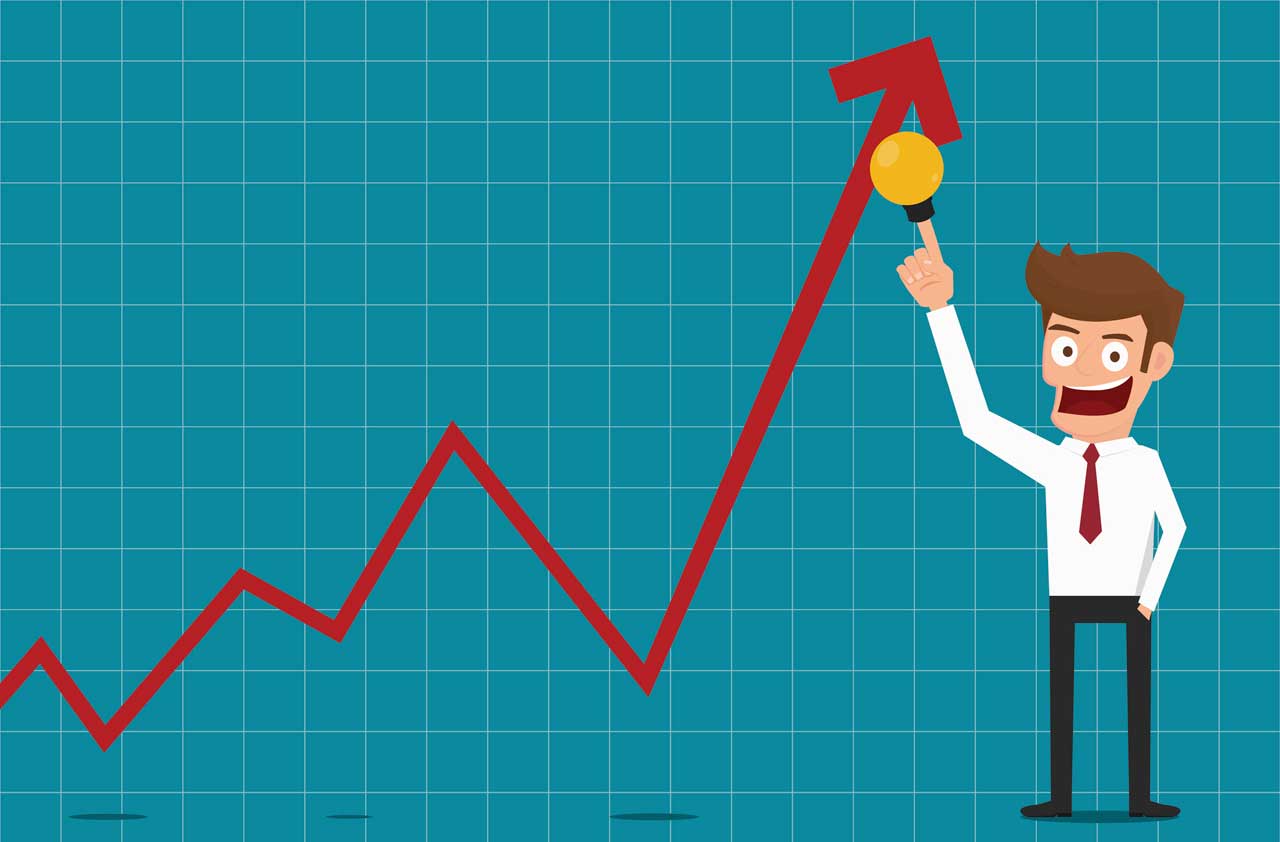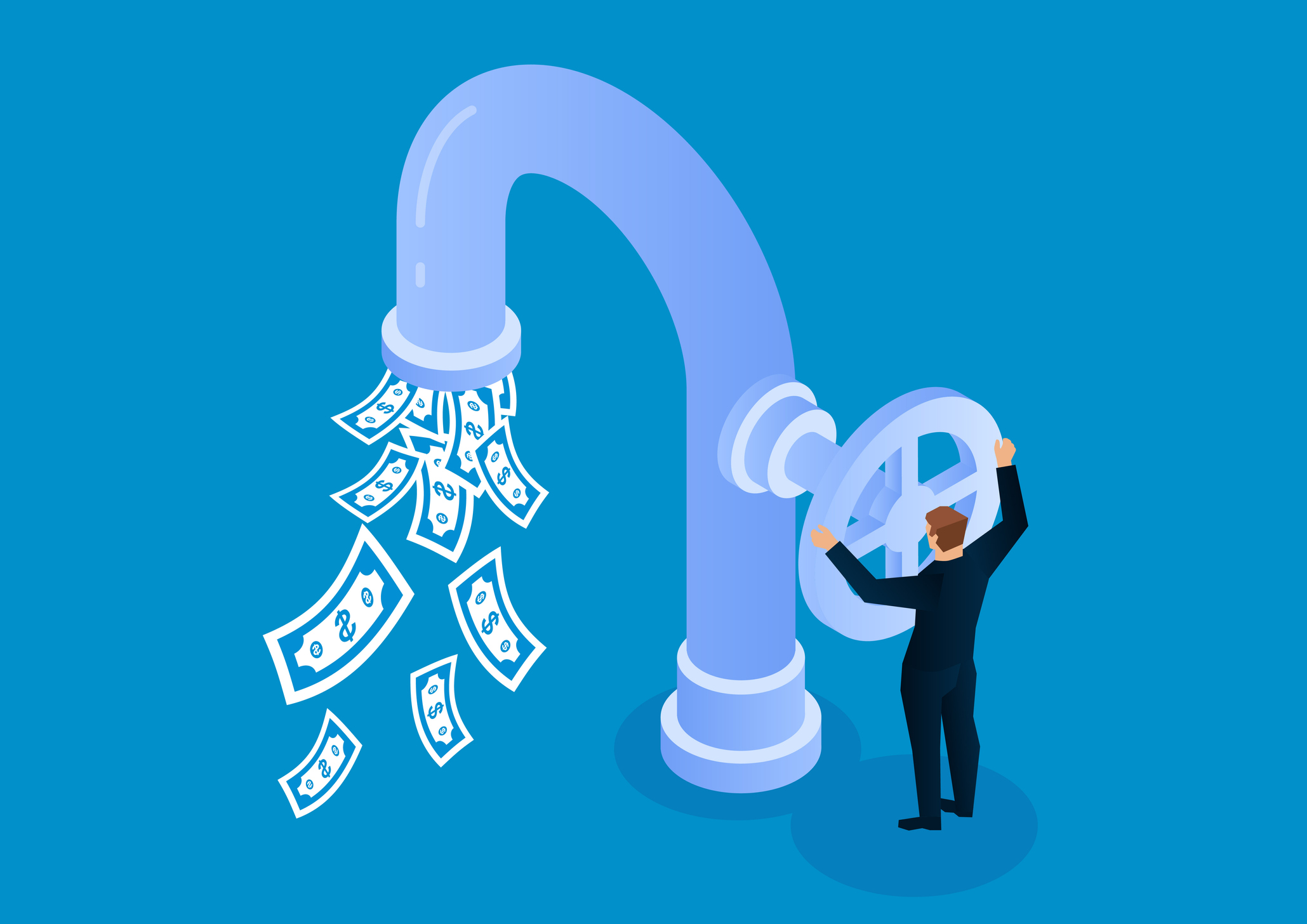5 Struggling Stocks That Will Turn Around in 2017
Fueled by a late-year surge, Standard & Poor’s 500-stock index has returned 13.2% so far in 2016.


Fueled by a late-year surge, Standard & Poor’s 500-stock index has returned 13.2% so far in 2016. But the factors that have boosted stocks since Election Day—hopes for corporate tax cuts, less regulation and a revival of “animal spirits” among consumers and businesses—haven’t lifted all stocks.
More than 100 issues in the S&P 500 have fallen in price this year, including dozens that have slumped by more than 10%. Drugmakers and other health care companies, pressured by concerns about weakening prices for their products, feature prominently on the loser’s list. Stocks in industries such as automotive parts, footwear, real estate and software also make the roster of laggards.
Yet these stocks won’t all stay in the dumps forever. Some will mount a comeback in 2017, making it an opportune time to try to identify the best candidates. December tends to be a good month to go bargain-hunting, says George Putnam, editor and publisher of The Turnaround Letter, a newsletter that focuses on beaten-down stocks. Fund managers “don’t want to spend January explaining to clients why they owned big losers,” he says. They would rather engage in “window dressing” by selling their losers before year-end. These stocks could still decline as the month winds down, but December can mark a low point before a revival in the new year.
Stocks that have hit the skids could keep losing ground if their underlying businesses don’t gain traction. Although investor sentiment can shift rapidly, real signs of strength would need to emerge in a business to keep the stock moving up. Don’t be seduced by low valuations; they’re meaningless if a company can’t right its ship. “Eventually, longer-term fundamentals take over,” Putnam says.
Although we can’t promise an immediate payoff, we found five stocks that stand a good chance of rebounding in 2017. Each has fallen by at least 8% so far in 2016.
Disclaimer
All returns, prices and related data are as of December 21. Sales are based on reported figures over the previous 12 months. Estimated profit growth is based on the average of analysts’ forecasts compiled by Zacks Investment Research.

Allergan
- Symbol: AGN
- Share price: $193.99
- Market capitalization: $72.8 billion
- 2016 return: -38%
- Annual sales: $16.5 billion
- Estimated 2017 profit growth: 20%
- Price-earnings ratio: 13
- Dividend yield: 1.4%
Investors seem to be losing confidence in Allergan’s ability to grow. The company hauls in more than $15 billion a year from pharmaceutical products, led by its cosmetic-treatment drug Botox, its biggest-selling product, and Restasis, a medication to treat chronic dry eye. But the number of prescriptions written for Allergan’s drugs in the U.S. fell by 7.2% in the first 10 months of 2016, compared with the same period of 2015. The firm could be in for a tough stretch in 2017, too, without a major new drug launch on the horizon, says Piper Jaffray analyst David Amsellem, who rates the stock “neutral.”
Yet Allergan retains some formidable strengths. The firm is sitting on more than $27 billion in cash and securities—about 14% of its market value—following the sale of its generic drug business to Teva Pharmaceutical Industries (TEVA). Allergan recently announced plans to spend an additional $10 billion on share buybacks, which should help lift earnings per share by more than 17% in 2017. The firm has also initiated its first dividend, starting in 2017, at an annualized rate of $2.80 per share.
Although Botox isn’t new, sales have been expanding for uses beyond cosmetics, such as treatment for migraine headaches and muscle spasms. And Botox is a biologic substance that should be well-protected from generic competition for years. Allergan also sells dozens of other drugs, including treatments for Alzheimer’s disease, various types of cancer, gastrointestinal disorders and other ailments.
With more than 65 drugs in mid-to-late-stage development, Allergan should launch some new products in coming years. That will help the firm replenish its lineup of brand-name medicines that will eventually lose sales to generic competition. The company can also deploy some of its cash for acquisitions to help shore up sales and profits.
At 13 times earnings, the stock looks cheaper than other big drugmakers, which trade at an average of 16 times estimated year-ahead profits, says analyst Jeffrey Loo, of S&P Global Market Intelligence. Over the next 12 months, he sees the shares hitting $260.
See Also: 27 Best Stocks to Buy Now for 2017

Chipotle Mexican Grill
- Symbol: CMG
- Share price: $393.50
- Market capitalization: $11.4 billion
- 2016 return: -18%
- Annual sales: $3.9 billion
- Estimated 2017 profit growth: 402%
- Price-earnings ratio: 50
- Dividend yield: 0%
Chipotle’s stock has been pulverized by one corporate blunder after another. The troubles started in late 2015 after the burrito chain reported an outbreak of E. coli bacteria and other food contaminants at some restaurants. Sales at restaurants open at least a year plunged by 14.6% in the fourth quarter of 2015, compared with the year-earlier period. Yet even after imposing much tighter food-safety controls, launching a loyalty-rewards program and beefing up its marketing efforts, Chipotle’s recovery has been anemic.
Profit margins have been sliding, too, as the firm has ramped up spending on marketing and other expenses. Chipotle’s leadership hasn’t inspired confidence, either. The firm announced in December that co-CEO Monty Moran would leave the firm. In a letter to investors, company founder Steve Ells, now the sole CEO, lamented that Chipotle’s operations had become “overcomplicated,” adding that the firm needs to act “with a sense of urgency” to revive the business.
Yet 2017 could finally be a turnaround year for the stock. The fast-casual chain has laid out plans to boost sales and profit margins, aiming to hold down costs, introduce new food items (such as desserts) and expand further into Europe. The firm intends to open between 195 and 210 new restaurants over the next year. Chipotle is also scrapping its recently launched ShopHouse Asian Kitchen restaurants to refocus on its core business, and it is investing in digital technology to speed up ordering and sales.
Chipotle’s P/E ratio looks astronomical because profits have crashed 92%, from a record annual high of $15.09 in 2015 to an estimated $1.82 per share in 2016. Profit forecasts for 2017 have fallen in the past three months. But analysts still expect earnings to surge, reaching $9.13 per share. One other reason to stick with Chipotle: Activist investor Bill Ackman, head of Pershing Square Capital Management, has amassed a nearly 10% stake in the company and won representation on the board. Ackman successfully invested in Burger King when it was struggling a few years ago. He appears to see similar prospects for a turnaround in Chipotle.

Coty
- Symbol: COTY
- Share price: $18.76
- Market capitalization: $14.0 billion
- 2016 return: -25.2%
- Annual sales: $4.3 billion
- Estimated 2017 profit growth: 44%
- Price-earnings ratio: 20
- Dividend yield: 2.7%
Beauty products maker Coty underwent an extreme makeover in 2016. The firm acquired 41 cosmetic brands from Procter & Gamble (PG), including fragrances sold under the Hugo Boss, Dolce & Gabbana and Gucci names, CoverGirl cosmetics and Max Factor makeup. Coty paid a hefty $11.6 billion to buy the business. But the deal, which closed in October, will nearly double the firm’s annual sales, to about $8.4 billion, making Coty the world’s third-largest cosmetics maker, after Estee Lauder (EL) and L’Oreal (LRLCY) (at number one).
Although Coty’s profits are getting a big lift from the P&G deal—with earnings per share estimated to jump 44% in calendar 2017—investors seem skeptical that it will pay off over the long run. Coty is assuming $1.9 billion of P&G’s debt, ramping up the firm’s interest expenses. Stiff competition in the global cosmetics market could make it tough for Coty to reach sales targets. A strengthening dollar would also hurt the firm, which derives more than two-thirds of its sales from foreign markets (profits earned in foreign currencies would be worth less when converted to greenbacks).
On its own, Coty’s business had been ailing. In November, the company reported that revenues in the July-September quarter declined by 3% from the year-earlier period, falling shy of Wall Street estimates. Even with P&G’s brands in its fold, the firm says it doesn’t expect to see “real improvement” in sales until the second half of its 2017 fiscal year, which ends in June, rather than in the first six months, as it had previously indicated.
Nonetheless, this could be a timely buying opportunity. Coty is “just at the start of a new era” following its merger with P&G’s beauty brands, says Bank of America Merrill Lynch analyst Olivia Tong. With a larger manufacturing base and greater distribution scale, Coty should be able to drive down costs and improve profit margins. Tong estimates that Coty will earn $1.13 per share in the fiscal year that ends in June 2018, up 16% from fiscal 2017. The stock should hit $23 over the next 12 months, she estimates. Investors can scoop up some dividends while waiting for a rebound. Coty recently hiked its payout by 82% and says it now plans to pay dividends quarterly at a rate of 12.5 cents per share.

Lennar
- Symbol: LEN
- Share price: $43.47
- Market capitalization: $9.8 billion
- 2016 return: -10.8%
- Annual sales: $11.0 billion
- Estimated 2017 profit growth: 5.1%
- Price-earnings ratio: 11
- Dividend yield: 0.4%
Rising mortgage rates pose a threat to homebuilders such as Lennar, whose shares have been sinking as rates have jumped this year. Higher rates make houses less affordable and reduce the value of builders’ land and housing inventory. Profit margins for builders could also face pressure if labor and material costs rise without a corresponding increase in prices.
Yet housing demand should continue to climb as employment expands and wage growth picks up. The number of new homes under construction remains well below levels before the Great Recession. The trend is keeping a lid on inventory and helping builders maintain prices, benefiting Lennar. In the three-month period that ended November 30, the builder delivered 8,228 homes, a 7% increase from a year earlier. The company also pushed through price hikes averaging 2.9%, raising its average price per home to about $357,000.
The second-largest publicly traded homebuilder, Lennar constructs more than 25,000 homes a year in 18 states. The company aims to lure buyers with a pitch that “everything’s included” in the price of a new residence, including upgrades such as home-automation technology and energy-efficient appliances. That strategy differentiates Lennar from other builders and helps the company sell more houses than most of its peers, says Bank of America Merrill Lynch.
Lennar isn’t just a builder of single-family homes, though. Its other businesses now include financial services, construction of luxury rental apartments, commercial development and property management. These businesses may help Lennar weather a slowdown in demand for new single-family homes. Lennar has also been an “astute land manager,” says Merrill, selling some real estate before the 2007-09 downturn and buying land early in the recovery—moves that have helped support profit margins.
If rates don’t increase substantially from current levels, the company should continue to prosper. In the current fiscal year, which ends next November, Lennar aims to deliver 28,500 to 29,000 homes with an average sale price of $365,000 to $370,0000—healthy gains over comparable 2016 figures.

Tractor Supply
- Symbol: TSCO
- Share price: $77.65
- Market capitalization: $10.2 billion
- 2016 return: -8.1%
- Annual sales: $6.5 billion
- Estimated 2017 profit growth: 8.9%
- Dividend yield: 1.2%
Price-earnings ratio: 22
City dwellers may never set foot in a Tractor Supply store. But the retail chain appeals mightily to “hobby farmers” and others living a rural lifestyle. Products for livestock and pets account for nearly half of the company’s revenues, but the firm sells loads of other goods, such as tools, outerwear, and lawn and garden items. Even with 2016’s poor performance, Tractor Supply’s niche as a rural-lifestyle retailer made it one of the hottest stocks in the S&P 500 over the past decade, producing a stunning 636% total return (22.1% annualized), including dividends.
Don’t expect that kind of growth over the next decade, partly because the company is much bigger than it was 10 years ago, with about 1,600 stores in 49 states today. But the stock’s recent stumble, following a disappointing earnings forecast issued in September, could make it a good time to get in.
Although Tractor’s growth is slowing, the company still sees an opportunity to reach 2,500 stores in the U.S. The firm recently announced plans to buy Petsense, a chain of more than 130 pet-supply stores that will help it ramp up sales in the lucrative market for pet products. Tractor recently opened a distribution warehouse in Arizona that should lower shipping costs to West Coast stores and customers. The firm is also investing in digital sales and marketing efforts to fend off online rivals.
Granted, Tractor faces sales threats from big chains such as Home Depot (HD) and PetSmart. But Tractor’s “customer-centric” store layout makes it a destination for many shoppers, says Jaime Katz, an analyst at research firm Morningstar. Tractor focuses on rural, do-it-yourself customers, many of whom want higher-end products than those found in stores that focus on the casual consumer, she says.
At 22 times estimated year-ahead earnings, Tractor doesn’t look cheap. But the shares have traded at an average of 28 times earnings over the past five years, according to Morningstar, making the current valuation somewhat more palatable. The stock is likely to keep rising as the company keeps building on its rural-lifestyle success.
See Also: 27 Best Stocks to Buy Now for 2017
Get Kiplinger Today newsletter — free
Profit and prosper with the best of Kiplinger's advice on investing, taxes, retirement, personal finance and much more. Delivered daily. Enter your email in the box and click Sign Me Up.

-
 Get Netflix, Hulu and Apple TV Plus for Free by Joining T-Mobile
Get Netflix, Hulu and Apple TV Plus for Free by Joining T-MobileT-Mobile customers save up to $35/month on streaming services thanks to this Netflix, Hulu and Apple TV Plus bundle. Here’s how to get it.
By Rachael Green
-
 Missed Tax Day? You Could Still Be Eligible for These Valuable Tax Refunds
Missed Tax Day? You Could Still Be Eligible for These Valuable Tax RefundsTax Refunds As many as one million taxpayers could be missing out on a significant tax refund.
By Gabriella Cruz-Martínez
-
 The Cheapest Places To Retire in the US
The Cheapest Places To Retire in the USWhen you're trying to balance a fixed income with an enjoyable retirement, cost of living is a crucial factor to consider.
By Stacy Rapacon
-
 How Inflation, Deflation and Other 'Flations' Impact Your Stock Portfolio
How Inflation, Deflation and Other 'Flations' Impact Your Stock PortfolioThere are five different types of "flations" that not only impact the economy, but also your investment returns. Here's how to adjust your portfolio for each one.
By Kim Clark
-
 Kiplinger's Economic Calendar for This Week (April 21-25)
Kiplinger's Economic Calendar for This Week (April 21-25)This week's economic calendar features several Fed speakers and a key reading on consumer sentiment.
By Karee Venema
-
 Why I Still Won't Buy Gold: Glassman
Why I Still Won't Buy Gold: GlassmanOne reason I won't buy gold is because while stocks rise briskly over time – not every month or year, but certainly every decade – gold does not.
By James K. Glassman
-
 Should You Use a 25x4 Portfolio Allocation?
Should You Use a 25x4 Portfolio Allocation?The 25x4 portfolio is supposed to be the new 60/40. Should you bite?
By Nellie S. Huang
-
 Retirement Income Funds to Keep Cash Flowing In Your Golden Years
Retirement Income Funds to Keep Cash Flowing In Your Golden YearsRetirement income funds are aimed to engineer a steady payout of cash for retirees. Here are a few we like.
By Nellie S. Huang
-
 10 2024 Stock Picks From An Investing Expert
10 2024 Stock Picks From An Investing ExpertThese 2024 stock picks have the potential to beat the market over the next 12 months.
By James K. Glassman
-
 Special Dividends Are On The Rise — Here's What to Know About Them
Special Dividends Are On The Rise — Here's What to Know About ThemMore companies are paying out special dividends this year. Here's what that means.
By Kim Clark
